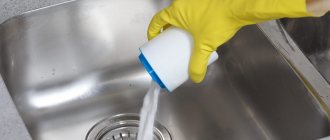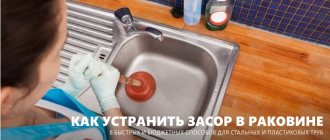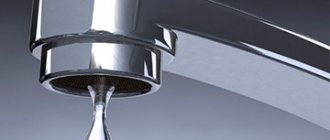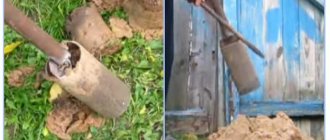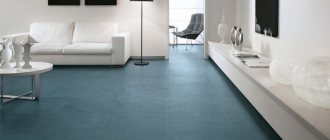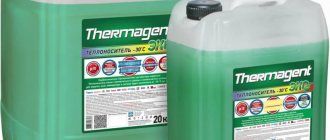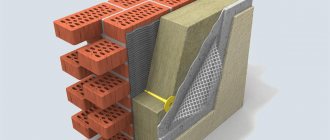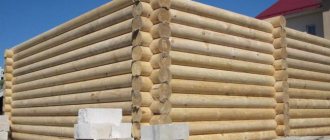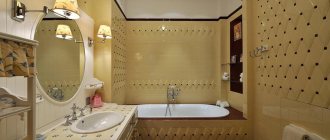Many owners independently replace outdated taps in the kitchen and bathroom, taking into account the fact that the services of plumbers are expensive, and this operation is technically simple and does not require any skills. When installing a new plumbing fixture, you usually have to throw away the old hose for the kitchen faucet, which often loses its seal over time or after dismantling.
When choosing a new flexible eyeliner, several types of products on the market are considered, each of them has its own advantages and disadvantages. To make the optimal decision, it is necessary to study the features of each type of hose for water supply, read consumer reviews and products of well-established manufacturers on the market, and take into account the ease of installation.
Examples of connecting reinforced connections
What to do if the sides are mixed up?
Incorrect placement of water supply hoses to the mixer causes great discomfort to many people. A hose with blue spots is used only for installing cold water supply. With red ones - for hot.
To resolve incorrect installation, it is recommended:
- Close the riser valve.
- Remove the nut from the distribution socket.
- Change hoses.
- Reinstall the hoses.
- Install new gaskets under the nuts.
- Check connections for leaks.
- Open the tap and check the flow.
The tubes must be swapped under the sink. The hot water supply is connected to the left socket. To the right - cold. The system can install universal hoses with blue and red shades. They are suitable for supplying both warm and cold flow.
Everything you need to know about hot water is presented in this section of the site.
Design selection
Each mixer model is characterized by the presence of certain design features. Single-lever products are distinguished by their practicality. This design allows you to regulate the flow intensity and temperature using one lever. Mixers with two valves are less practical, but fit perfectly into the classic kitchen interior.
Some models are equipped with a special motion sensor; they are classified as non-contact products. When you bring your hands to the faucet, a sensor is triggered and water starts flowing. For the kitchen, this option cannot be called suitable for solving the question of how to install a faucet in the kitchen, since very often it is necessary to draw water into various containers.
The main factor influencing the cost of mixers is the alloy used and the brand of the manufacturer. The most affordable products are made of silumin and other cheap alloys. Such faucets have an attractive appearance, but quickly become unusable. This is explained by the fact that the manufacturing material itself is prone to cracking and quickly turns into crumbs.
High quality faucets are made of brass with a layer of nickel, aluminum or chrome. This increases the attractiveness of the products and makes them more resistant to wear.
Sewerage
Water drainage can be arranged:
- In a rented apartment - in the sink or bathtub. The plumbing fixture will be unsuitable for use for its intended purpose for no more than an hour and a half a day. As a bonus, you will receive a guaranteed absence of sewer blockages: hot water with powder perfectly washes away fat from the walls of sewer pipes, which is the main cause of blockages;
Not easy, but very simple: the drain is directed into the kitchen sink
- If you have a plastic prefabricated sewer comb installed in your apartment (intra-apartment sewerage distribution) - into the tee installed in its gap. Preferably - oblique, with a drain directed in the direction of movement of the drains. In this case, a volley discharge of water (for example, from a bathtub) and its simultaneous drainage by a washing machine will not lead to overflowing of the pipes;
Connecting the drain to the oblique tee
- Owners of cast iron sewers should take a closer look at siphons for sinks with an outlet for connecting the drain hose.
Connecting the drain to the siphon
The general rule is that the connection of the drain hose to the sewer must be sealed. Sealing is carried out with standard rubber cuffs or any available material (adhesive tape, polyethylene foam, etc.). Through leaky connections, fumes from sewer drains and risers will enter your apartment, and they will not smell like roses.
Sealing the connection between the drain and the sewer with a rubber cuff
Installation of water supply pipes
Although there are two different wiring schemes, in practice they usually use either a series circuit or a combined one - series-collector. The simplest materials in terms of installing water supply wiring are considered to be polypropylene, metal-plastic, cross-linked polyethylene pipes and copper.
Outdoor installation of water supply
– pipes run along the walls. For open installation, polypropylene pipes are most often used.
Hidden installation
water supply - pipes are laid in grooves and hidden with plaster, in a concrete screed, in the underground.
- The routing of water supply pipes starts from the entry point, i.e. source of water supply - pumping station, hydraulic accumulator, pressure tank, central water supply pipe entry.
The common supply pipe must have a diameter of at least an inch to ensure minimal pressure loss.
It is mandatory to install a coarse water filter and a shut-off valve.
Next, the installation of pipe routing begins according to the selected scheme, i.e. Pipes are installed in the bathroom, kitchen, and laundry room. If the pipework begins in the basement and the heating boiler is located there, then a separate exit to the boiler is made.
For sequential wiring, if you do not plan to hide it with decorative panels and a box, it is recommended to install the pipes 15–30 cm above the baseboard. Thus, the pipes will be inconspicuous and in some places hidden by plumbing fixtures.
When laying through walls and ceilings, pipes should be protected from damage. To do this, a casing pipe or a special collar is placed in the hole.
The pipes are fixed using special clips, plastic and metal clamps.
Design and types of hoses for the mixer
The overwhelming majority of kitchen faucets on the market have standard inlets for supplying cold and hot water with a cut internal thread with a diameter of 10 mm. To connect to the mixer, the liner is equipped on one side with a fitting with an M10 thread (the height of the threaded ridge is 10 mm), and on its opposite end there is an American type fitting.
The American one includes a union nut placed on the widened (flared) end of the sleeve and a sealing gasket. When the nut is screwed onto the threads of the supply pipes, the ring seal is compressed and ensures the tightness of the connection.
The standard internal diameter of the union nut for connecting a kitchen faucet to water supply pipes is 1/2 inch (15 mm), and there are other less popular nut sizes - 3/4, 1, 1 1/2, 1 1/4, 2, 2 1 /2 inches.
Not every kitchen faucet hose has a threaded nipple for connection to the plumbing fixture. Some expensive models from the world's leading manufacturers with high spouts and internal shower heads (German companies Grohe, Hansgrohe, Blanco, Czech Lemark) are connected without threads by snapping.
Braided sleeves - device
Flexible braided hoses
The most popular and budget type of eyeliner. It is an elastic rubber tube placed on both sides in herringbone bushings and protected on top by a metal braid. The rubber casing (internal diameter 8.5 mm) is securely pressed against the fittings using pressed ferrules, ensuring a strong, tight and permanent connection.
In addition to ordinary rubber, high-quality hoses use tubes made of modern elastic material EPDM - a chemically produced elastomer, which is a peroxide cross-linked ethylene-propylene-diene rubber. Due to its high physical and chemical parameters (resistance to a wide range of temperatures and neutrality to most aggressive chemicals), the EPDM tube ensures a long service life of the entire product.
The outer shell of the sleeve consists of thin woven threads, the main material of which is aluminum or more expensive stainless steel; cheap galvanized steel is much less common.
Crimping sleeves in high-quality connections are made of plastic and durable AISI 304 stainless steel, the fitting and union nut are made of nickel-plated brass (grades UNI EN 12165 CW614N, UNI EN 12165 CW617N), in cheaper types - of AISI 304 stainless steel, O-rings and gasket - made of EPDM.
A flexible braided hose can be designed to supply only cold or hot water (individual threads are blue or red, respectively), but in everyday life, universal hoses with red and blue markings are most often used.
Braided hose - materials of manufacture
There are a large number of braided hoses on the market of domestic, Chinese and European production, which have a significant difference in manufacturing quality, on which the service life and physical and chemical parameters of the products depend. Therefore, when considering the technical characteristics, these factors should be taken into account, the main features of the braided eyeliner:
- The working pressure for products made of high-quality rubber and a stainless steel shell is 10 bar, the maximum can reach 20 bar; for budget varieties, these figures are on average half as low - 5 and 10 bar, respectively.
- The operating temperature range of the products is from 1 to 90 °C with a maximum of up to 100 °C.
- The service life of the hose depends on the quality of the hose and, accordingly, its cost; for budget types, its average is 5 years, for expensive ones 10 or more.
High strength multi-layer hose design
- Thanks to the elastic inner tube and outer reinforcement, the liner can be bent with the smallest radius, while a more budget-friendly product in an aluminum shell is more ductile and softer than with stainless steel reinforcement.
- The liner is easily connected to the mixing device using a wrench; first, the fittings are screwed to the body (for ease of connection they come in different lengths), then it is attached to the pipeline using the union nut of an American fitting.
- On the market there are reinforced, expensive models from foreign manufacturers that have a polymer (nylon, polyethylene) braid or two layers of metal and synthetics. This hose can withstand a pressure of 20 bar (tensile strength 80 bar) and has an average service life of 15 years.
- The main advantage of flexible hoses with metal reinforcement is their affordability; they are classified as budget products.
- The disadvantages of braided liners include the satisfactory reliability of their internal rubber tube - over time, it loses its elasticity, becomes brittle, cracks appear on the shell and the sleeve begins to leak.
Rubber braided and polymer hoses
Polymer
Water connections made of polymeric materials (cross-linked polyethylene, silicone, polyvinyl chloride) are often used in shower systems to attach shower heads; unlike their analogues in metal corrugated pipes, they do not scratch the surface of plumbing equipment - shower cabins, bathtubs. To increase strength, a metal spiral or a rigid cord made of synthetic threads is often located inside the polymer tubes.
To connect mixing devices, polymer hoses are used much less frequently and usually in models for kitchens from foreign European manufacturers. Polymer liners have high temperature (up to 100 °C) and pressure (working pressure up to 20 bar) characteristics, a long service life of at least 15 years.
Bellows liner - physical characteristics of Laflex brand products
Bellows hoses
A bellows connection is a corrugated (compressed in the transverse direction) thin-walled 0.3 mm stainless steel pipe (AISI 304 grade) with connecting fittings at the edges. In appearance, the bellows corrugated pipe is similar to a hose for a kitchen faucet equipped with a retractable shower head. However, the latter has a completely different design - its outer shell is made of spiral-wound stainless steel (a similar design for shower heads), inside of which there is an elastic tube made of rubber or silicone.
To connect to the mixer, the corrugated pipe is equipped with a fitting with O-rings on one side and an American-type union nut on the other. The pressed fitting is made of stainless steel or brass, as is the American union nut, which is held on the flared pipe end.
Bellows hoses and examples of their application
The bellows corrugated pipe has the following features:
- The service life of high-quality stainless steel is quite long; for a bellows liner its average value is 25 years.
- It is clear that stainless steel can withstand significant temperatures; for thin-walled metal the working value is about 250 °C.
- The bellows tube is highly durable; it can be used to supply water with a working pressure of 16 atmospheres with a maximum of up to 50 atmospheres.
- Stainless steel is an environmentally friendly material, therefore it is safe for humans when used in drinking water supply lines.
- When bending, the corrugated surface of the sleeve prevents the cross-section of its shell from changing, that is, it cannot bend like a flexible polymer with complete blocking of the passage channel.
- The bellows corrugated tube dampens vibrations in the system and is resistant to water hammer and prevents salt deposition.
- The bellows is not very convenient when connecting in a confined space - it is less flexible than polymer hoses with or without braiding, and has a large radius of curvature.
- Also, the disadvantages of the bellows include its slightly higher price than its braided counterparts.
Hard eyeliners - varieties
Hard
Sometimes a kitchen sink is hung on the walls and does not have a cabinet underneath, in which case the usual eyeliner does not look very aesthetically pleasing. To give the appearance a style and increase its decorativeness, hard eyeliner is sometimes used, which has the following varieties.
Metal hoses
This type is usually used in expensive imported faucets; in them, the fitting for connecting to the tap does not have a thread, and the other end is connected to the pipes using an American one. The materials used to make the metal liner are corrosion-resistant compounds - chrome-plated or colored-coated brass, stainless steel, copper, bronze.
Fittings for connecting polymer pipes
Some plumbers prefer a reliable and rigid method of connecting a mixer using plastic pipes if they supplied water to the entire house or apartment. To implement this connection option, the retail chain sells special compression fittings with fittings for connecting to the mixer body - one of them is straight, and the second is curved at a certain angle. After screwing the adapters, a metal-plastic pipe is connected to them and clamped with a compression nut.
Examples of rigid connection of mixers
What to look for when installing faucets yourself?
Many apartment and house owners install the faucet themselves. The old SNiP regulations clearly stated the rules for the location of valves on the mixer. Therefore, professional plumbers continue to adhere to traditional standards. They are comfortable for most people.
When arranging the water supply system, it is recommended to pay attention to the comfortable use of water, the location of all valves, taps, and mixers convenient for each family member.
In the bathroom, it is important to consider the location and height of the shower hose holder.
How gardeners in the 21st century make connection points for a watering hose to a water supply
Many people use a garden hose for watering, washing cars and solving other tasks in the garden. In this case, you have to connect to the water supply using a tap, which often becomes loose over time, and in winter it can even freeze and burst. It is much more convenient to mount a quick-release wall hydrant with frost protection instead. It looks neater, and its fastening is much more reliable.
Connection accessories
Before starting work on connecting the hose, you will need to purchase all the necessary materials. Each type of connection has its own list of required goods.
To the barrel
In order to carry out the procedure for connecting the hose to the barrel without any hitches, you will need to prepare the following available tools in advance:
- fum tape or specialized cream;
- connectors;
- union;
- coupling;
- filter.
It is advisable to purchase all components in a double set, especially if you have no experience in connecting pipes and hoses. There is a possibility of incorrect connection with further reworking of the work. Reattachment requires the use of new materials.
To the tap
When it comes to connecting a hose to a home plumbing fixture, the following list of items is required to be purchased:
- fum tape or sealing cream;
- connectors;
- union;
- coupling;
- clamp;
- threaded fitting (they differ; a different fitting option is selected for each specific situation);
- diverter.
The final list of required materials is influenced by the chosen connection method.
Given
First, let's formulate the terms of reference as clearly as possible:
- Modern washing machines are connected only to cold water supply. The water is heated to the required temperature by its own heating element;
- The thread diameter of the inlet hose is DN 20. To connect it, you will need an external thread of the same size;
The photo shows the inlet hose. The size of the attached threads is 3/4 inch, or DN 20
- A hermetically sealed solenoid valve is responsible for drawing water from the water supply system. Accordingly, turning off the water with a separate tap is necessary (for example, in case of going on vacation - it will serve as additional insurance against flooding of neighbors), but the corresponding element of the shut-off valve will be used infrequently;
- The automatic machine is installed at a minimum distance from the water supply and sewage system. Its typical location is a bathroom (or a combined bathroom), a kitchen, or a storage room located near the bathroom.
Areas of use of quick-release fittings
Quick-release connections are widely used for domestic needs, namely in watering work. The presence of such elements simplifies assembly, and there is no need to turn off the water. Quick connectors for hydraulic hoses allow you to connect hoses to pumps, sprinklers and other watering elements. They are also used for branching networks. For household needs, simple plastic products that are characterized by wide functionality are sufficient. They usually consist of several elements. Some fittings are equipped with a locking mechanism or an auto-stop option.
Quick release hose connectors work well with a variety of watering attachments. They also protect the hose from kinking. Products made of impact-resistant plastic with a galvanized coating are widely used. They are more convenient to use because they are less slippery.
Fittings are widely used in production shops when installing hydraulic systems. With their help, you can extend the flexible hose, allowing you to move the equipment to another location. There are also quick releases for pneumatic tools. Such fittings are made of impact-resistant steel with a protective corrosion layer. They are presented as whole specimens. When connecting them, the hose is inserted into the device. Inside it is captured by a carved springy bushing, which creates a tightness of the liner. To remove the hose, you must press down on the locking ring.
Various manufacturing materials allow the use of quick releases both in everyday life and in industry
Important! When choosing quick-release connections for a specific area, the diameters, dimensions and operating pressure values for all elements of the system must be ensured.
Quick-release connections have found their application in the installation of special-purpose pipelines in the metallurgical, chemical and mining industries. They are often used in the construction of water, rail or road transport and the assembly of medical equipment.
Which GOST regulates this issue, what does it say?
There is GOST 25809-96, which regulates the very design of the water tap, hoses, and outlet pipes. However, it does not regulate the supply to the mixer valves. The location of the water supply tap is determined only by the working drawing.
GOST suggests choosing the position of the hot and cold tap depending on the existing drawing of the system being modeled.
According to the European standard and the Russian standard, warm water is supplied from the left side of the mixer. Unless the plumbing customer requests otherwise, the water supply is determined as such.
Installation with copper pipes
You will need - ¾ and ½ inch pipes (copper pipes have thin walls); gas-burner; a hacksaw and a metal brush for cleaning; flux paste; solder; fittings - adapters, elbows, crosses, tees, couplings, water sockets.
Installation of connections using soldering.
- The end of the pipe and the inside of the fitting are lubricated with a thin layer of flux
The fitting is put on the pipe until it stops
The connection is heated until the color of the pipe changes
Soldering copper pipes.
For open pipe laying, non-annealed pipes are used, for hidden pipes, annealed pipes are used (they bend easily).
